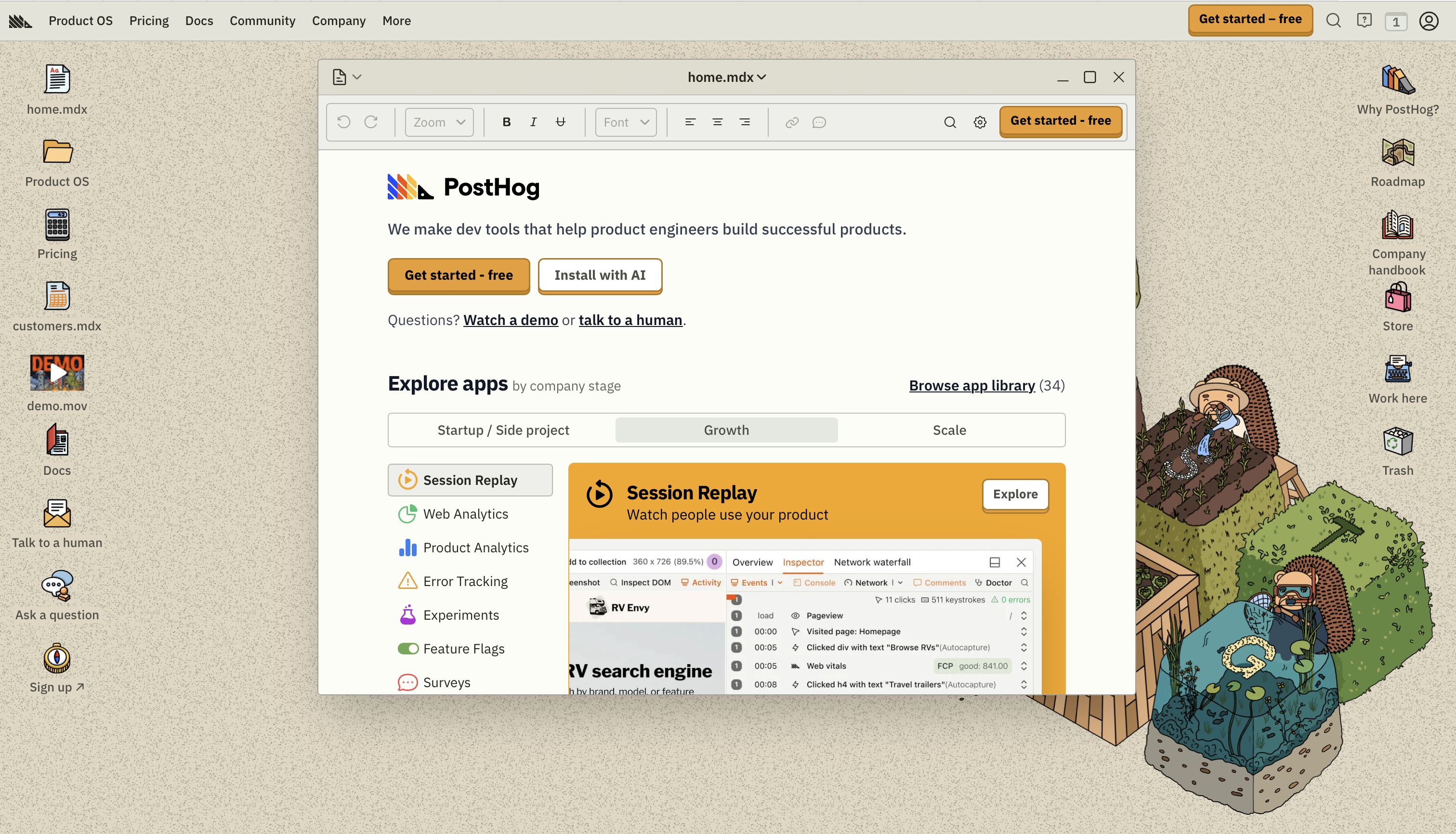
PostHog avoids using existing category names because they either pigeonhole a more complex product or confuse buyers. Instead of just explaining what they do, their homepage walks buyers through a guided realization.
It starts with intentional category ambiguity backed by trust signals, aka big customer logos. Then, it challenges buyers’ current approach by revealing what’s not working. Finally, it leads them to conclude that they need a full-fledged infrastructure, instead of just product analytics.
The rest of the homepage removes friction and reinforces alignment so the main insight can stick.
PostHog has a positioning problem: they do more than product analytics. They have session replay, feature flags, A/B testing, data warehousing, and more. But there’s no existing category name that captures everything their product does.
If they call themselves a “product analytics tool,” buyers will compare them to Mixpanel and Amplitude, and miss everything else they offer. If they lead with “product data infrastructure” or “product OS,” buyers won’t understand what that means. The category doesn’t exist yet in buyers’ minds.
So they do neither.
Instead, PostHog uses their homepage to avoid being pigeonholed and walks buyers through a realization. Here’s the narrative arc they build, section by section:
The hero says “dev tools for product engineers.” Not analytics, not platform, not infrastructure. Just “dev tools.”
Then section 2 shows you a file system full of capabilities: session replay, feature flags, A/B testing, data warehouse, product analytics. They’re organized by company stage (Startup, Growth, Scale), not by category. You can explore them like folders.

The implicit message: “This isn’t one thing. What you need depends on where you are.” Buyers start thinking: “Wait, what IS this?”
Section 3 shows customer logos with self-aware transparency: “Yes they actually use us, no it’s not just random engineer who tried us out 2+ years ago.”
They acknowledge the skepticism. They know you don’t trust social proof. They’re in on the joke with you. But they still haven’t told you what category they’re in.

By section 4, you’ve seen enough breadth to know this isn’t a simple tool. That’s when they make their move:
“When you’re analyzing how customers use your product, you should be operating from the full set of data. This includes customer information that happens outside your product: payments from Stripe, exceptions in an error tracking tool, tickets in your support platform.”
The word “should” implies: you’re probably not doing this right now.
They’re not saying “we’re better analytics.” They’re saying “your current analytics only see in-product behavior. You’re making decisions on incomplete data.”

PostHog challenges the status quo by naming what’s missing, while showing the consequence. This is the narrative flip. This homepage part aims to shift buyers’ belief:
They don’t force an old or new category. They’re simply revealing the reality buyers experience.
PostHog’s homepage doesn’t say: “We’re product data infrastructure.” But it shows:
And you realize: “Oh. I don’t need another analytics dashboard. I need infrastructure.”
If PostHog led with “We’re product data infrastructure” in the hero, you’d be confused. What does that even mean? Instead, they use narrative sequencing to walk you through a realization:
By the time you understand what they are, you’ve already experienced why you need them. But the flip, can’t complete if buyers have doubts and frictions.
That’s why the rest of the homepage removes blockers and reinforces alignment:



The narrative arc creates the flip. The supporting sections remove friction and build trust so the flip can stick.
